Beaugravière revisited

Nick revisits an old favourite of those who love wine, and black truffles.
My photo below shows the van that Guy Jullien, the long-time wine-obsessed chef and owner of La Beaugravière restaurant in Mondragon, just off the Autoroute du Sud in the far north of the southern Rhône, was parking as we pulled into the restaurant’s car park just before midday.

There is nothing smart about this vehicle, a van normally associated with painters and decorators. We watched Jullien jump out of the driver’s seat and, wearing his chef’s jacket and broad-butcher’s-stripe trousers, head straight for the kitchen. Meanwhile, his wife, the ever-smiling Tina, knocked on our car window and, having ascertained that we had a booking, urged us in to the dining room.
This was to be our first trip back to this restaurant since our first visit seven years ago, when we had spent a night in one of what were the three rather rundown bedrooms. We had been woken very early due to its proximity to the main north–south railway line. In the interim, we are told, the bedrooms have been spruced up and increased in number, but the restaurant’s location has not changed.
Nor has its interior. Moche is the precise French word to describe it, a word that translates best as 'drab'. The colour of the walls is a pale yellow, a ‘design feature’ picked up by the same colour of the tablecloths. A lick of paint would be more than in order; the tablecloths could do with a higher natural fibre content. There is a fireplace that gives off some warmth but that was left to peter out as the room filled up. The lavatories, off to the right, are in need of sprucing up as well, with the odd handle missing and the sight of the outdoor furniture piled up outside. (Go in summer when you can eat outside under the trees.)
The Julliens either do not care, or do not choose to care, or do not see this as any obstacle to their major preoccupation, which is seeing that all their customers are well fed, well watered, particularly well wined and generally well looked after. All of these objectives the Julliens manage to achieve in a truly exemplary, and highly personal, style.
Guy’s input is threefold. The first is his obvious love affair with black truffles, which come predominantly from the village of Richerenches close by, and which, I reported in 2012, can see up to two tons of truffles being traded in a week. And although late April is not exactly the time of year to expect black truffles, Jullien is an obvious expert at preserving them and his menu has a separate section devoted to seven dishes incorporating ‘the last black truffles’ that ranged from an ‘omelette aux truffes’ (€55) to a ‘chausson de truffe et foie gras’ (€120), roughly a top-of-the-range black truffle and foie gras sandwich. The winter of 2018 saw a prodigious harvest for black truffles and Jullien brought in a large plastic container of these beauties from which he had trouble extracting one the size of a cricket ball.
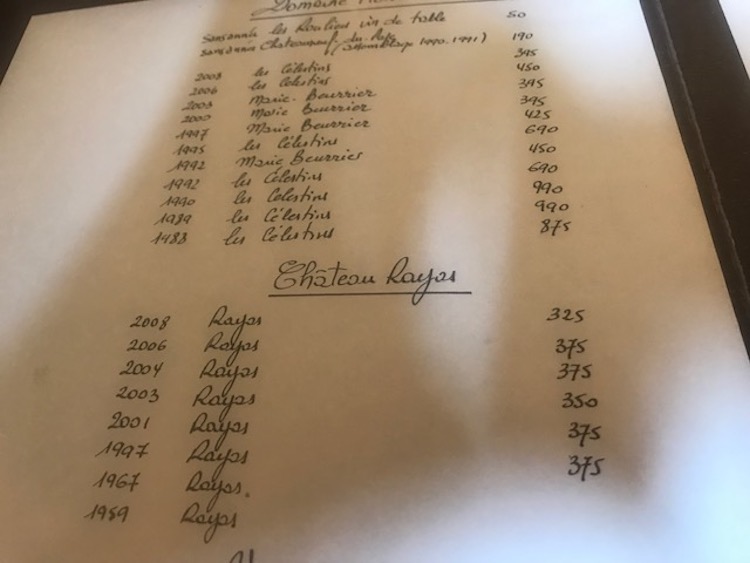
His second point of influence is via his wine list, a passion, a love that he has pursued all his life. The thick, rather battered list – bearing only the words La Beaugravière and La Cave – has long been a treasure trove for any lover of Burgundy, the Rhône and in particular Château Rayas and it sibling Château de Fonsalette. The oldest bottle on the list is a magnum of 1949 from Comte Georges du Vogüé from Jullien’s birth year for €12,000 but most are far, far less expensive. We drank an excellent bottle of 2016 St-Aubin En Remilly from Pierre-Yves Colin-Morey for €85. (See below for a selection of some of the wines, their range in years and their prices.)
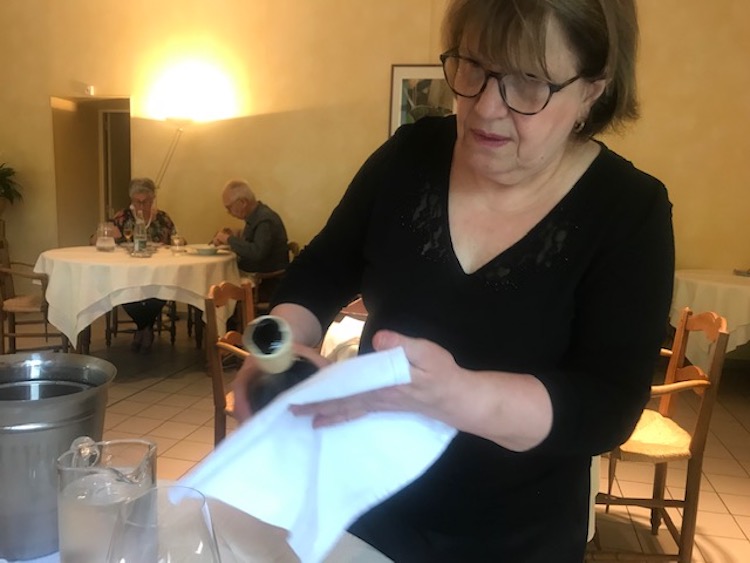
The third and final aspect of why everyone should pay at least one visit here is for the warmth and honesty of the hospitality provided by Tina, her daughter and the one waiter who is the only formally dressed person in the place, in his white shirt, black trousers and black bow tie. Tina is the perfect height, no more than five foot tall, so she has the great advantage of being able to look her seated customers directly in the eye. That, plus a face that readily breaks into a smile and exudes maternal warmth, make the lack of smart or distinctive décor – after a couple of glasses and the flavours of the first course – barely noticeable.
What has changed, and perhaps not surprisingly, given Jullien’s isolation not just in his kitchen but also in his location, are his opinions, opinions that have over the years become even more forthright and definitive. He tours the tables expounding them. Most of his Burgundy suppliers have become increasingly greedy. The state of modern French cooking, particularly at the very top, is little short of a national disgrace – all flowers and artifice and not enough food. ‘Paul Bocuse would be spinning in his grave.’ And if you want to become rich, invest in clinics to restore good health to our young whose health will undoubtedly suffer through either their unwillingness to eat good food or the increasing lack of opportunity.
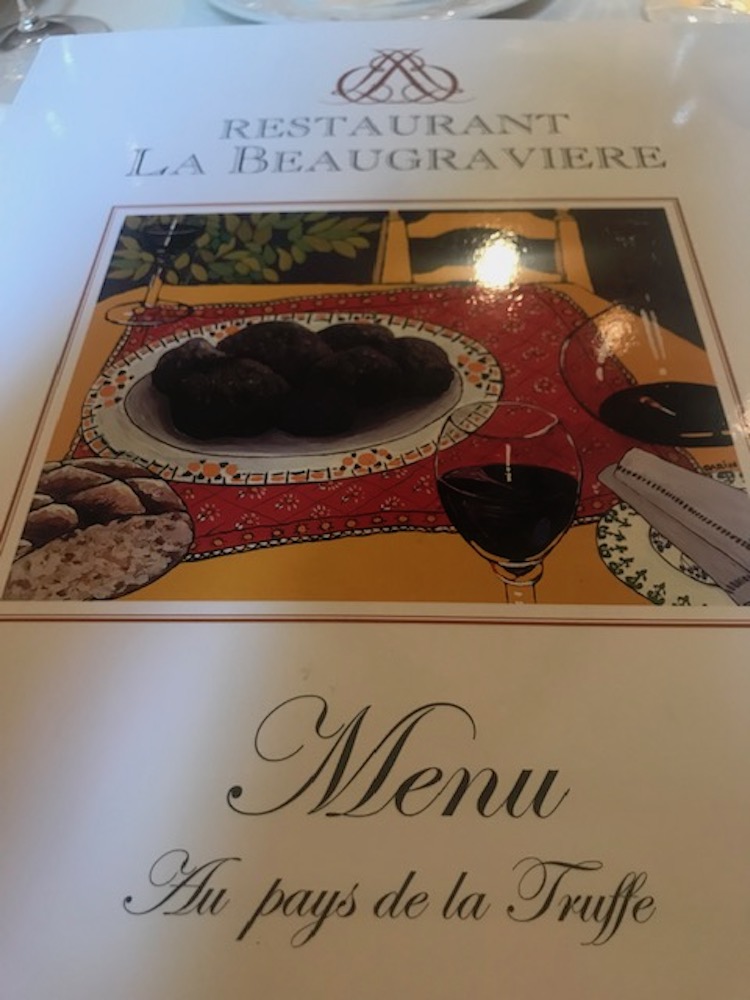
Having absorbed a good ration of Jullien’s bons mots, and while Jancis agonised over the wine list, I turned my attention to the menu, on the front of which is a painting of a plate loaded with truffles, a glass of red wine and the words ‘au pays de la truffe’. This was no easy thing to do as there are numerous menus to choose from, ranging from an à la carte, to set menus at €33, €59 and a three-course menu at €19. Eventually we both chose from the €59 menu, from which I ordered scrambled eggs with truffles, a favoured dish, followed by turbot – as much for the Noilly Prat sauce that was served with it – while Jancis chose foie gras sautéed with caramelised pears and a navarin of Breton lobster. [Just a light lunch ... JR]
First came a ‘little gift’, half an asparagus mousse for each of us served alongside a piece of toast on to which was sliced a thick piece of black truffle, its primeval flavours accentuated by salt and a dribble of olive oil. Then for me, more black truffles with my first course, a dish that should and could have been renamed black truffles with scrambled eggs rather than the other way round as the truffle helpings were so generous throughout (pictured top right). The noticeable factors in my main course were the pure white colour of the steamed turbot and the pinkish colour of the sauce that was served in such a generous and harmonious combination.
After these came some cheeses, strawberries for Jancis and a thin apple tart with honey ice cream and a coffee for me, together with a bill for €232. Then came the words that really brought a smile to Jancis’s face. ‘Would you like to see the wine cellar?’, Monsieur Jullien enquired.
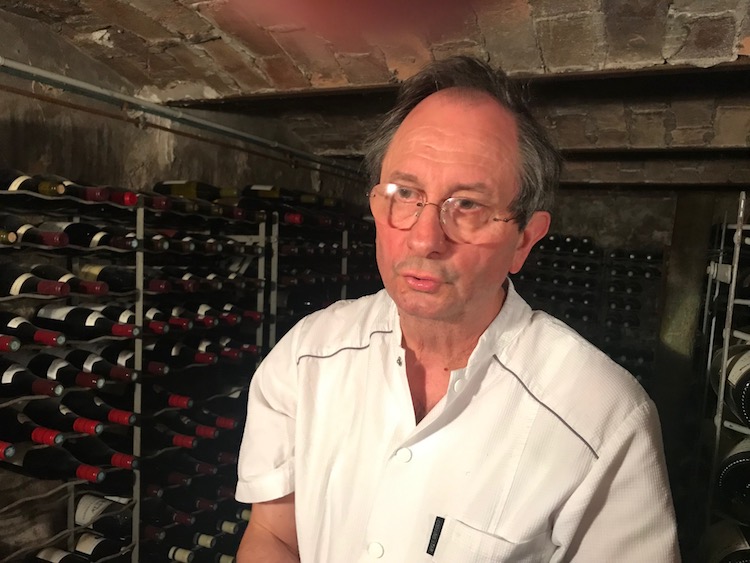
We had been invited to visit the cellar on our last visit but it seemed to have grown. The four rooms with their earth floors are reached down a twisting staircase on which are lodged an empty bottle of DRC Grands Échezeaux 1989 and a wooden case of Maury 1939. Here Monsieur Jullien seems to shed 50 odd years as he becomes a little boy again playing with his toys. He handles the bottle from his birth year; he shows us the bottles bought for him by his two daughters on school trips that have no intrinsic value other than love for their father (see below); he shows us the oldest bottle in his cellar, a bottle of ratafia de champagne from the year that Möet & Chandon was founded, its neck held in place by a wooden stopper. He shows us a rack of La Chapelle from Paul Jaboulet, a wine that he has not bought since the death of Gérard Jaboulet in 1997, and the racks full of white Hermitage from J L Chave. The ultimate beneficiaries of this passion will be his grandchildren, Jullien confesses.
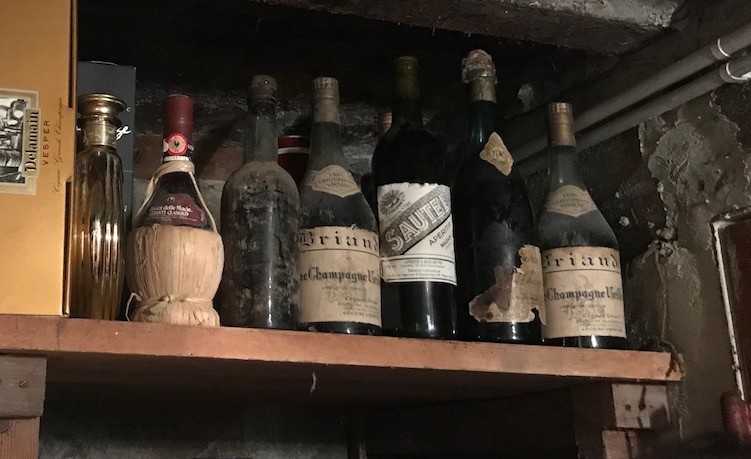
La Beaugravière is hors concours. It is a restaurant all on its own, the creation of two extremely dedicated individuals. I would urge anyone, and certainly every wine or black-truffle lover, to visit here at least once.
La Beaugravière 214 avenue du Pont Neuf, 84430 Mondragon, France; tel +33 (0)4 90 40 82 54
Become a member to view this article and thousands more!
- 15,399 featured articles
- 274,790 wine reviews
- Maps from The World Atlas of Wine, 8th edition (RRP £50)
- The Oxford Companion to Wine, 5th edition (RRP £50)
- Members’ forum
- 15,399 featured articles
- 274,790 wine reviews
- Maps from The World Atlas of Wine, 8th edition (RRP £50)
- The Oxford Companion to Wine, 5th edition (RRP £50)
- Members’ forum
- Commercial use of our Tasting Notes
